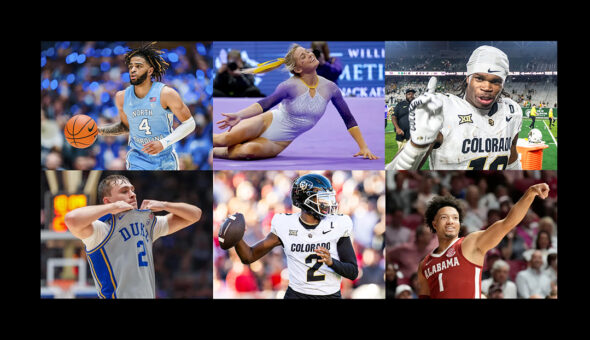So how to start and ensure your website is optimized? A good place to begin is to ask the core questions that a customer is looking to have answered when they come to the university’s website.
- Do you have the program they want?
- How much does it cost?
- What’s your campus like?
- Can they see themselves fitting in there?
- How easy is it for them to apply?
If prospective students and their families cannot find the information they need on your website, that’s a major problem.
What I’ve discovered in working in higher education is that there’s often a difference between what the university administrators and faculty think a prospective student wants and the student is looking to find.
The biggest difference is often listing information about a program on a web page. Modern web writing best practices recommend text that’s easy to read with short paragraphs interspersed with images or an embedded video. But I’ve seen faculty provide more than a thousand words of dense, academia-steeped text. The clash is clear: Faculty are the experts who have the in-depth knowledge of the topic, but a 16-year-old is looking for digestible content that they can understand.
To bridge the gap between the two sides, a well-thought-out strategy is needed.
Universities often think that they have all of the needed information (and more!) on their website, but is the content being displayed in a way that the customer wants?
Let’s take a step back.
Start small and take some time to see the type of questions that come in from prospective students through online forms. In my position, I’ve seen what prospective students send in — everything from complaints about a broken link, outdated information and even detailed questions on how to apply as an international student.
Everyone who sends in a question and cannot find the information they need is a potential customer — a customer who might pay for four years of tuition, housing, a meal plan and eventually become a donor after they graduate.
The customer service experience that each person has with the university is critical.
And often the first touchpoint is through a website.
The importance of having a website that is not only mobile-optimized but ADA accessible and easy to navigate cannot be overstated. But that’s only part of what a customer needs. They’re also looking for a good UX experience, content that answers the questions they typed into search and authenticate pictures — no stock photos. Generation Z can smell a “three and a tree” photo a mile away.
The challenge in providing an excellent website for potential customers is also to match that with excellent customer service.
And that’s where many universities fall.
Navigating through internal approval of content that translates to what 16-year-olds want can be hard enough. The brilliance of your faculty needs to be distilled into words that a teenager wants to find in search. Writing for the web means writing for your customers. And your customer is a prospective student.
The millions of high school students looking at colleges each year want and need certain answers. If they can’t find them on your website within a few short seconds, they’ll move on to your competitor.
When a prospective student decides they want more information from you, 76% of high school students visit a university’s website to complete an online form, as per the Ruffalo Noel Levitz & OmniUpdate 2019 E-expectations trend report.
If the form isn’t mobile optimized and easy-to-use, you’ll probably lose them.
But even once the form is submitted, there needs to be the follow through on your enrollment side.
I’ve seen systems that take 24-hours to email confirmation on an RFI form submission, and that’s after a prospective student had to complete a form that asked them a laundry list of required questions.
Again, a prospective student is your potential customer. Remember that. Be sure to provide excellent customer service as a holistic experience from your first touchpoint until the last.
To adapt to the shifting enrollment landscape, your executive leadership will need to light the way.
Throwing dollars at SEO keywords will not solve the problem, and neither will launching another marketing campaign (no matter what the agency says).
If you want to stave off the problems ahead, universities need to invest in building out a website that’s supported by people who know how to write for the web and match that with a strong enrollment team.
But where to start?
- Engage with a data research partner to learn what your university is doing right, compare that to your competitors and analyze where you’re landing in SERP for your programs.
- Take a hard look at your website, and if the budget allows, do some studies (focus groups of prospective undergraduates and their families) to test how your website is performing. (Do you have a program search tool? How about a tuition calculator? And mobile RFI forms? These are all good places to start.)
- Assess and update as necessary the university’s website governance plan and get leadership buy-in. The road ahead will take time and financial investment.
- Take the data you’ll receive from your data research partner and create a content strategy that embraces what your potential customers want. Look to answer questions and provide not just textual responses, but visuals as well.
- Build relationships among your IT, marketing, and enrollment groups. If your university is lucky enough to have a CRM, use the information there to ensure that your enrollment team is available to answer questions from prospective students (phone, email, Skype, etc.) promptly.
On top of this, providing excellent customer service is critical. If someone comes to your site, starts to answer a form and then abandons it, learn why. Take the data and reach out. Each prospective student is a person who is looking for help. Embracing that and connecting the dots will translate into higher yield and positive word of mouth.
Remember, students are creating their own YouTube channels and talk about their college experience regularly. Some of your current students will influence through their videos future high schoolers who will consider coming to your university.
Yes, there are great challenges ahead in higher education. Some universities will need to close, others will merge, but yours can be the one that thrives. As the enrollment landscape and technology keeps evolving, look to the future, and embrace change.
The work you need to do might take years and seem daunting, but ignoring the change is not going to help you ride the disruption ahead.
If you strip away all the buzz words, think about your mission: Provide easy to find information for prospective students and show them (through words, images, and videos) why they’ll succeed by coming to your university.
Colleges and universities need to sell themselves to the world. With fewer applicants and dropping enrollment, embracing strategies to strengthen your online presence will position you for what’s to come.







